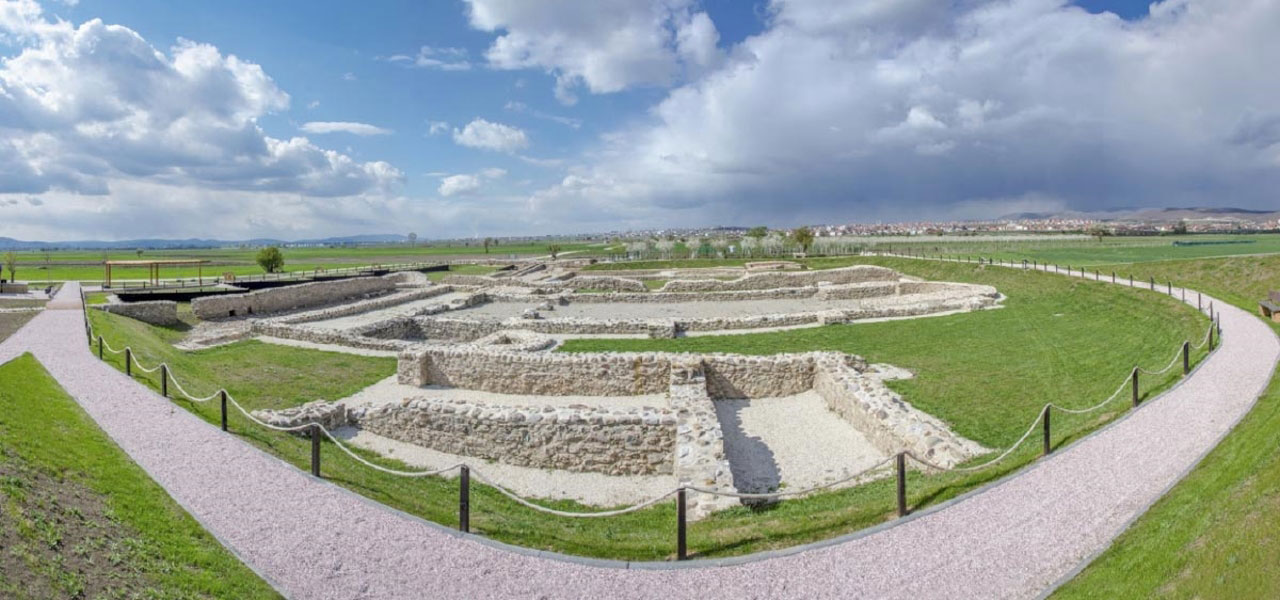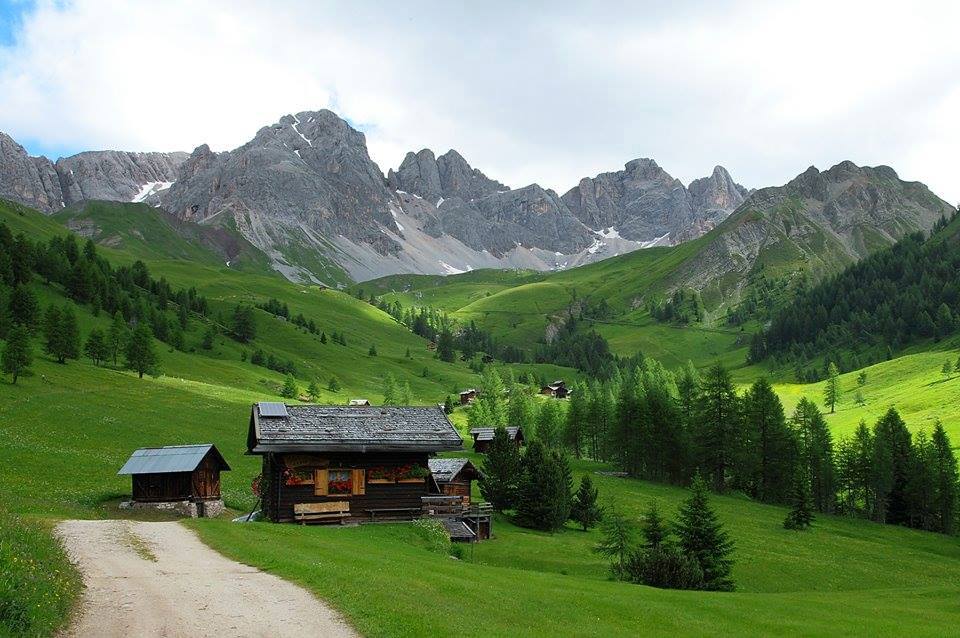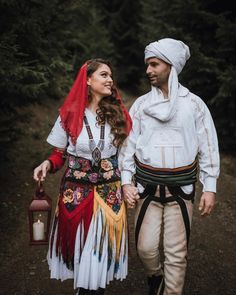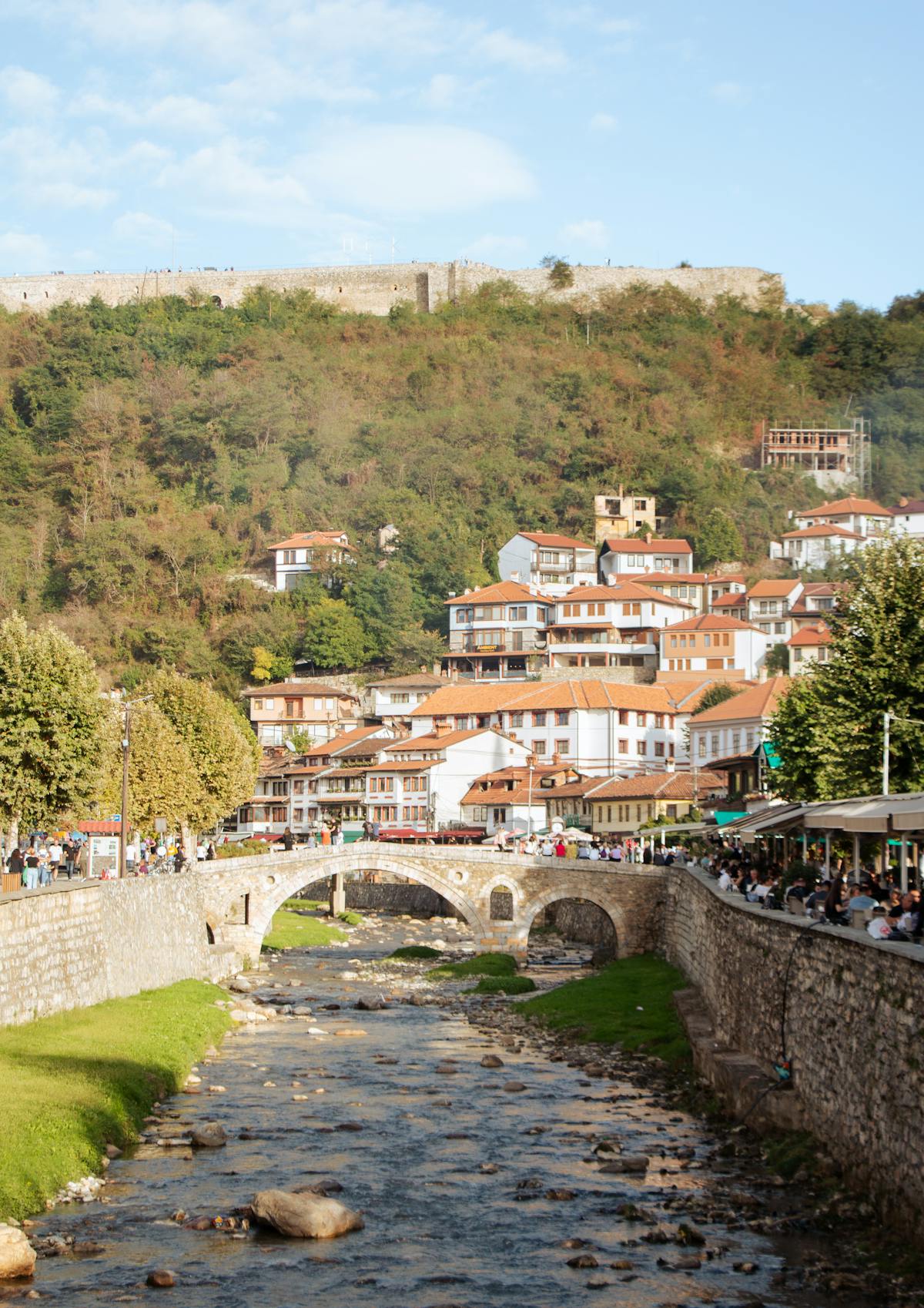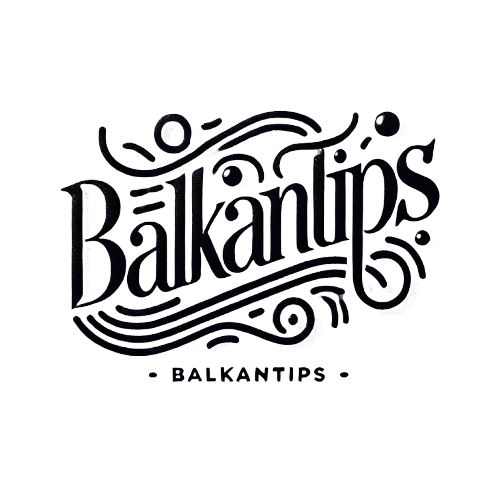

Explore the stunning landscapes, rich culture, and unique history of Kosovo.
Kosovo is a landlocked country in the heart of the Balkans, celebrated for its picturesque landscapes, deep-rooted history, and rich cultural diversity. Here are key periods in Kosovo's historical development: Ancient Times: The region was originally inhabited by Illyrian tribes, one of the earliest known populations in the Western Balkans. They developed unique cultural practices, including art, religion, and fortification techniques. With the Roman conquest in the 1st century BCE, Kosovo became part of the province of Moesia, and cities such as Ulpiana emerged as Roman administrative and cultural hubs. Ulpiana, near today’s capital Pristina, was known for its elaborate architecture, public baths, and temples. These ancient roots highlight Kosovo's role in the broader Illyrian and Roman cultural heritage of the Balkans. Medieval Kosovo: During the medieval period, Kosovo became a significant center of the Serbian Empire, particularly in the 13th and 14th centuries. The town of Prizren and the Patriarchate of Peć are notable sites from this era, reflecting both religious and cultural development. Ottoman Era: Kosovo was incorporated into the Ottoman Empire in the 15th century after the famous Battle of Kosovo in 1389, which marked a turning point in the region’s history. This era introduced Islam to the area, resulting in the construction of mosques, madrasas, and Ottoman-style public buildings. Key architectural contributions from this time include the Gazi Mehmet Pasha’s Mosque in Prizren, one of the oldest mosques in Kosovo, as well as the Prizren Fortress, which was fortified further by the Ottomans. The Ottoman period also influenced local cuisine, language, and traditions, as well as the establishment of bustling marketplaces and crafts in cities like Prizren and Peja. This period left a profound cultural legacy that remains part of Kosovo's identity today. Balkan Wars and World War I: Following the Balkan Wars, Kosovo became part of the Kingdom of Serbia, which was later integrated into the Kingdom of Serbs, Croats, and Slovenes after World War I. This period marked significant political and social changes. Yugoslavia: After World War II, Kosovo was designated an autonomous province within the Socialist Federal Republic of Yugoslavia. During this time, industrialization and modernization efforts were introduced, though political tensions continued to simmer. Independence Movement: The late 20th century saw increasing tensions, culminating in the Kosovo War of 1998-1999. After a period of United Nations administration, Kosovo declared independence in 2008, although its status is still contested by some nations. Modern Kosovo: Today, Kosovo is known for its vibrant cities, such as Pristina and Prizren, as well as its scenic mountains and natural beauty. The country has a growing tourism sector, with visitors drawn to its cultural heritage and warm hospitality. Kosovo is a multicultural society, home to diverse ethnic communities. Festivals, traditional music, and cuisine reflect this rich tapestry, making Kosovo a unique destination in the Balkans.
Kosovo’s culture is a vibrant blend of Albanian, Ottoman, and Serbian influences, characterized by deep-rooted traditions, rich music, and unique cuisine. The country's cultural identity is celebrated through its folklore, hospitality, and numerous festivals.
Kosovo’s architecture reflects its complex history and diverse cultural heritage, spanning from ancient Illyrian remnants to Ottoman-era structures and modern designs. Key styles and examples include:
The architectural diversity in Kosovo reflects its rich history and cultural evolution, with structures from ancient to contemporary periods marking the nation’s journey.
Kosovo hosts a variety of vibrant festivals and celebrations that highlight its cultural heritage and traditions.
Kosovar cuisine is rich in fresh, local ingredients, drawing on Balkan and Ottoman culinary traditions.
Kosova’s ancient history begins with the Illyrian tribes, particularly the Dardanians, who settled in the region around the 6th century BC. The Dardanians formed a distinct culture known for their metalworking, pottery, and impressive hilltop settlements, some of which have been uncovered at archaeological sites like Hisar Hill and Ulpiana. The strategic location of Kosovo along the Via Egnatia, an ancient trade route linking the Adriatic Sea with the Balkans, enabled the region to thrive as a cultural and commercial hub.
In the 2nd century BC, the Roman Empire expanded into the area, incorporating Kosovo into the province of Moesia. Roman influence brought new infrastructure, including roads, aqueducts, temples, and public buildings that connected Kosovo more deeply to the Roman world. The Roman city of Ulpiana grew as an important administrative and economic center, and today, remnants of walls, mosaics, and ancient inscriptions provide insights into Roman governance and daily life. Early Christian communities also established a presence, leaving behind structures such as the remains of a basilica in Ulpiana, reflecting the spread of Christianity in late antiquity and its lasting influence on the region.
Evidence of human activity in Kosovo dates back to the Paleolithic era, with artifacts uncovered in sites like Rudnik indicating early settlement. During the Neolithic period, cultures such as the Vinča culture emerged, leaving behind pottery, figurines, and tools. These artifacts reveal a society engaged in farming, trade, and artisanal crafts, laying the foundation for later civilizations and establishing Kosovo’s role in the prehistoric development of the Balkans.
Under Roman rule, Kosovo was integrated into the province of Moesia, and the city of Ulpiana became a significant urban center. The Romans brought advanced architecture, governance, and infrastructure to the region, with extensive roads connecting the Balkans to other parts of the empire. Archaeological excavations in Ulpiana have revealed ruins of temples, public baths, and early Christian basilicas, highlighting Kosovo’s role in both the administrative and spiritual networks of the Roman Empire.
Following the decline of Roman influence, Slavic tribes migrated into the Balkans, and Kosovo became an integral part of the early medieval Serbian state. The area was culturally significant within the Serbian Orthodox Church, with the establishment of notable religious centers such as the Monastery of Gračanica and the Patriarchate of Peć. The latter served as the religious center of the Serbian Orthodox Church, playing a crucial role in the preservation of Serbian culture and Orthodoxy during this period.
The arrival of the Ottoman Empire in the late 14th century marked a transformative era for Kosovo, following the pivotal Battle of Kosovo in 1389. Although the Ottomans initially faced resistance, they soon solidified control, and Kosovo became an essential part of the Ottoman Empire for over 500 years. During this time, Islamic architecture flourished, with the construction of mosques, public baths (hamams), bridges, and bazaars that continue to define the region’s architectural landscape. Notable structures, such as the Sultan Mehmet Fatih Mosque in Pristina and the Old Bazaar in Gjakova, reflect the Ottoman legacy in Kosovo.
Ottoman rule also introduced a millet system, allowing various religious communities to govern their own affairs and fostering a multicultural society where Albanian, Turkish, Bosniak, and Serbian communities coexisted. This system contributed to Kosovo’s cultural diversity, and the gradual conversion of Albanians to Islam led to a unique blend of Albanian traditions with Islamic customs. Additionally, the Ottoman era was a period of economic growth, with Kosovo emerging as a trade and craft center known for textiles, leather goods, and metalwork. Cities like Prizren and Peja flourished as cultural hubs, attracting artisans and merchants from across the region.
The 17th and 18th centuries saw numerous uprisings against Ottoman rule as Kosovo’s population sought greater autonomy and cultural preservation. This period was marked by the efforts of leaders who advocated for independence and resisted Ottoman control. The weakening of the Ottoman Empire in the 19th century led to heightened national consciousness and intensified efforts by Albanians to assert their cultural identity and political rights, laying the groundwork for the independence movements that would follow.
After the First Balkan War in 1912, Kosovo was liberated from Ottoman rule but was soon incorporated into the Kingdom of Serbia, and later Yugoslavia. The interwar period saw political tensions as Kosovo’s Albanian population faced challenges related to cultural expression and political rights within the Yugoslav state. During World War II, Kosovo experienced occupation by Axis powers, leading to resistance movements among various ethnic groups.
Following World War II, Kosovo became an autonomous province within the Socialist Federal Republic of Yugoslavia. This period was marked by significant economic development and cultural promotion, with Albanians in Kosovo gaining greater recognition of their language and educational rights. However, ethnic tensions persisted, especially as calls for independence grew in the 1980s, leading to increasing demands for political and cultural autonomy.
The Kosovo War of 1998-1999 led to Kosovo’s declaration of independence from Serbia in 2008, recognized by over 100 countries. Today, Kosovo is a developing democracy with a vibrant cultural scene, working toward greater economic stability and international integration. Although challenges remain, particularly regarding international recognition and economic growth, Kosovo has made significant strides in fostering a modern, multicultural society that celebrates its diverse heritage.
Early Origins of the Albanian Language
Illyrian Roots: The Albanian language, spoken by the majority in Kosovo, is believed to have roots in the ancient Illyrian languages, dating back to the early inhabitants of the Balkans. Although direct linguistic links are challenging to establish due to the scarcity of Illyrian inscriptions, the connection has been widely acknowledged by scholars.
Latin Influence: With the Roman conquest of the Balkans in the 2nd century BC, Latin had a lasting impact on Albanian, introducing many Latin loanwords still used today, particularly in areas like governance, law, and religion.
Byzantine and Slavic Influences: The presence of the Byzantine Empire and later Slavic migrations in the region brought additional linguistic layers, enriching the vocabulary of early Albanian with Greek and Slavic loanwords. These interactions helped shape the structure and vocabulary of the modern Albanian language.
Medieval Manuscripts: The first written records of Albanian appear in the 15th century, with early texts demonstrating a distinct language that had developed unique phonological and grammatical features. The "Meshari" (The Missal) by Gjon Buzuku, published in 1555, is one of the earliest known Albanian books, showcasing the religious and cultural aspirations of Albanians at the time.
Influence of the Church: The spread of Christianity through Byzantine and later Catholic missions influenced early Albanian literature, which incorporated both Latin and Greek elements. These religious texts contributed to the preservation and development of the Albanian language.
Ottoman Turkish and Arabic Vocabulary: During the Ottoman era (15th to 20th century), the Albanian language absorbed numerous Turkish and Arabic words, especially in areas related to administration, culture, and daily life. This period introduced terms that became integral to Albanian, especially in urban centers.
Bilingualism and Cultural Exchange: The Ottoman period encouraged linguistic diversity, with Albanian coexisting alongside Turkish, Serbian, and Bosnian. Many Albanians became bilingual, contributing to a rich cultural exchange that influenced linguistic expressions and idiomatic phrases within Albanian.
Linguistic Revival: The 19th century marked a period of national awakening for Albanians, with increasing efforts to standardize the language and assert a distinct cultural identity. The League of Prizren, formed in 1878, was instrumental in promoting Albanian language and culture, advocating for a unified alphabet and education in Albanian.
Influence of the Albanian Renaissance: The Albanian Renaissance brought together intellectuals who worked to formalize the language, creating literary societies and publishing Albanian books. These efforts were critical to preserving Albanian in the face of foreign influence and contributed to a growing sense of national pride and identity.
Standardization: In the 20th century, efforts were made to standardize Albanian across Kosovo and Albania. The 1972 Albanian Orthography Congress established the Tosk dialect as the standard, though Gheg remains widely spoken, especially in Kosovo. Standardization played a crucial role in unifying Albanian speakers.
Contemporary Influences: Albanian in Kosovo has absorbed words from Turkish, Serbian, and increasingly English, reflecting modern cultural exchanges and Kosovo's international relationships. This adaptability is seen in new vocabulary for technology, media, and education, demonstrating the language’s flexibility in a globalized context.
Phonology: Albanian has a unique phonological system with specific vowel and consonant sounds distinct from other Balkan languages. Written in the Latin alphabet, Albanian has undergone standardization, particularly in Kosovo, to reflect both regional dialects and modern usage.
Grammar: Albanian is highly inflected, with noun cases, verb conjugations, and a complex system of adjectives and pronouns. The language has five noun cases, along with aspects for expressing both completed and continuous actions, adding depth to its grammatical structure.
Vocabulary: The core of Albanian vocabulary is of Illyrian origin, enriched by Latin, Greek, Turkish, and recent English loanwords. These influences reflect Albania’s long history of cultural interactions, especially in fields like governance, religion, and contemporary digital life.
The Albanian language is a central aspect of Kosovo’s identity, embodying a rich history and cultural heritage. Its preservation and promotion are crucial to the national pride of Kosovo’s Albanians, expressed through literature, music, folklore, and a vibrant oral storytelling tradition. Celebrations of language and cultural festivals contribute to the pride and unity among Albanian speakers, emphasizing its role as a pillar of Kosovo’s cultural landscape.
